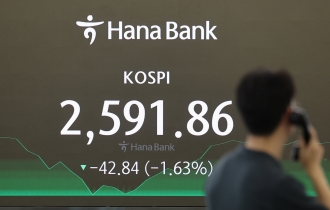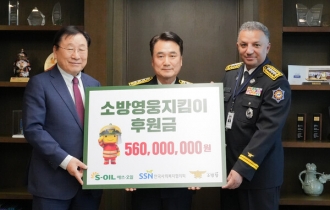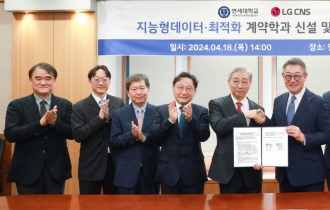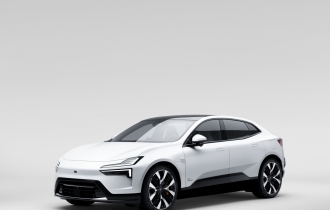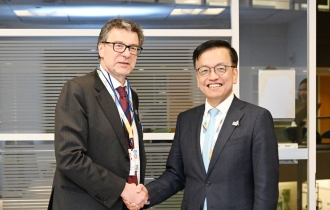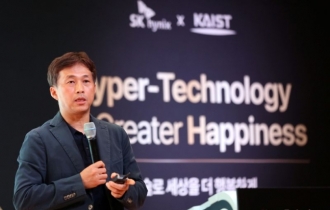[INTERVIEW] Vuno aims to launch bone age analytic device this year
[THE INVESTOR] Recent advances in artificial intelligence have begun to revolutionize the field of medicine and health care as machines show potential to improve the diagnosis of illnesses and treatment planning.
At the core of the movement is a form of high-level machine learning called deep learning. Based loosely on the human brain, deep learning uses large artificial neural networks -- layers of interconnected nodes -- that rearrange themselves as new information comes in, allowing them to self-learn without the need for human programming.
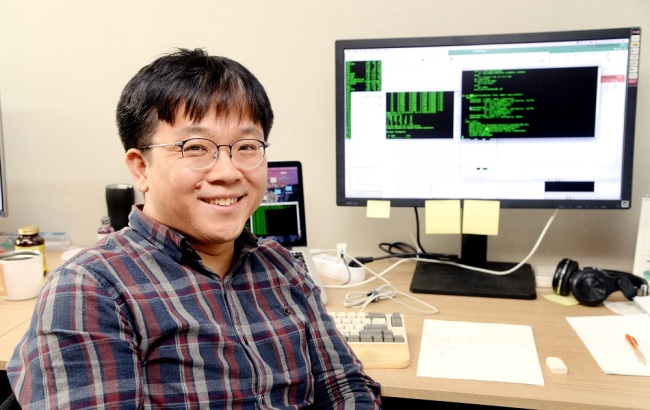
Vuno CEO Lee Ye-ha Park Hyun-koo/The Korea Herald
In health care, this includes feeding the machine a large number of medical images and training it to automatically discern certain desired information about the patient.
Tech giants like Google, IBM and Microsoft have set out to develop deep learning tools for the medical sector. Joining them, a South Korean tech startup is set to introduce this year a new device trained to read X-ray images and instantaneously determine a person’s “bone age” – a measurement of bone development that differs from chronological age.
Founded in 2014, Vuno has been working on multiple projects with local hospitals to develop new systems to analyze different types of medical data, including X-ray, CT and MRI scans.
Three years have passed, and now the company is ready to commercialize its first device -- called “Bone Age” -- in Korea.
Built in partnership with Seoul’s Asan Medical Center, Bone Age uses Vuno’s self-developed deep learning engine -- dubbed Vuno-Net -- to read a hand X-ray image and determine the person’s bone age, or skeletal age.
It’s designed for use at children’s growth clinics to predict how much more a child can potentially grow, or to guide a treatment plan for pediatric growth disorders such as growth hormone deficiency, said the Seoul-based company.
Vuno’s device works by comparing the inputted X-ray slide with a similar bone image pre-identified as being of a certain age. Moreover, by inputting a parent’s height, the self-intelligent device calculates the child’s expected height based on genetic influences and his or her chronological age.
“Traditionally, doctors have had to manually flip through a reference book to find an age-labeled bone image that can be compared to the image under scrutiny, a process that takes at least five minutes or more,” said Vuno co-founder and CEO Lee Ye-ha in an interview with The Korea Herald.
“Our product can perform this task in mere seconds. It can compare the hand X-ray slide with the same, if not better, accuracy of a human doctor with more speed, saving time for doctors to pursue other more critical tasks,” he said.
In addition to its bone age analytic device, Vuno said it is currently working on applying its deep learning engine to build a device that analyzes CT images to automatically determine signs of interstitial lung disease as well as predict how the lungs were damaged by the disease.
The Korean startup has several other deep learning-based algorithms for different medical purposes in the making with local hospitals, though the details cannot be shared as of now, according to the 39-year-old CEO.
Lee, who holds a Ph.D. in computer science and engineering from Korea's Pohang University of Science and Technology, is a former engineer at the Samsung Advanced Institute of Technology. Eyeing the explosive growth of machine learning in the years ahead, he left the institute with two colleagues to found Vuno.
Vuno’s deep learning capabilities have won the attention of both the government and private investors. After being selected to join the state-run tech incubator program for startups, it raised 3 billion won (US$2.63 million) in funding from SBI Investment, Smilegate and HB Investment last year.
While deep learning is a promising technology with unlimited potential for the medical sector, the Vuno CEO pointed to apparent hurdles in expanding its applications and development scope.
Right now, Vuno works independently from each hospital, handling medical data accessible only via its internal server. This means Vuno engineers must always be on the hospital premises in order to carry out their work, limiting mobility. Moreover, hospitals do not exchange their data with one another, making it difficult to build bigger datasets.
“It would be useful if we could develop and service our technology to multiple hospitals at once via a cloud server, making sure that the identity of the patient’s medical data is erased,” Lee said. “The government has begun preliminary talks on legalizing the pooling of such data for companies like us.”
At the same time, Korea -- whose medical institutions have built an advanced picture archiving and communication system, or PACS -- is generally an optimal location for developing deep learning-based medical analytic tools, the CEO said.
“Boasting an advanced health care system and a high PACS adoption rate, Korea has a pool of high-quality medical data that is favorable to developing products like ours. Yet it’s a small single market,” Lee said.
“This is why we’re looking to bring our services to the global market, particularly Asian countries like China and parts of Southeast Asia with less advanced health care systems and populations that are ethnically similar to Koreans,” he added.
The rapid advancement of artificially intelligent computer systems like Vuno’s poses the big question -- will human doctors be soon replaced by smart machines? According to the Vuno CEO, the answer is “not quite.”
“As much research has suggested, AI will not replace doctors as a profession, but rather replace certain tasks in which machines can excel over humans -- routine procedures that are repetitive, data-heavy and time-consuming,” Lee said.
“Machines will buy human doctors more time to focus on the patient, which is a core direction that Vuno follows in developing all of medical analytic technologies and products.”
Most importantly, when it comes down to human doctors versus machines in health care, the final decision will most likely be left to the human doctor due to issues of accountability, the CEO said.
By Sohn Ji-young/The Korea Herald/(jys@heraldcorp.com)
EDITOR'S PICKS
- Seoul shares rattled by Israeli attack on Iran; Kospi dips to nearly 11-week low
- S-Oil donates W560m to support firefighters
- LG CNS teams up with Yonsei University to nurture AI specialists
- Polestar 4 to make Korean debut in June
- S. Korea pledges W23tr venture capital fund for green investment at G20 meeting
- Sungsimdang outperforms bakery giants to log sales over W100b
- France rejects opening Paris flight routes to T'way Air, deals blow to Korean Air merger
- SK hynix chief underscores chip cooperation between Korea, US






